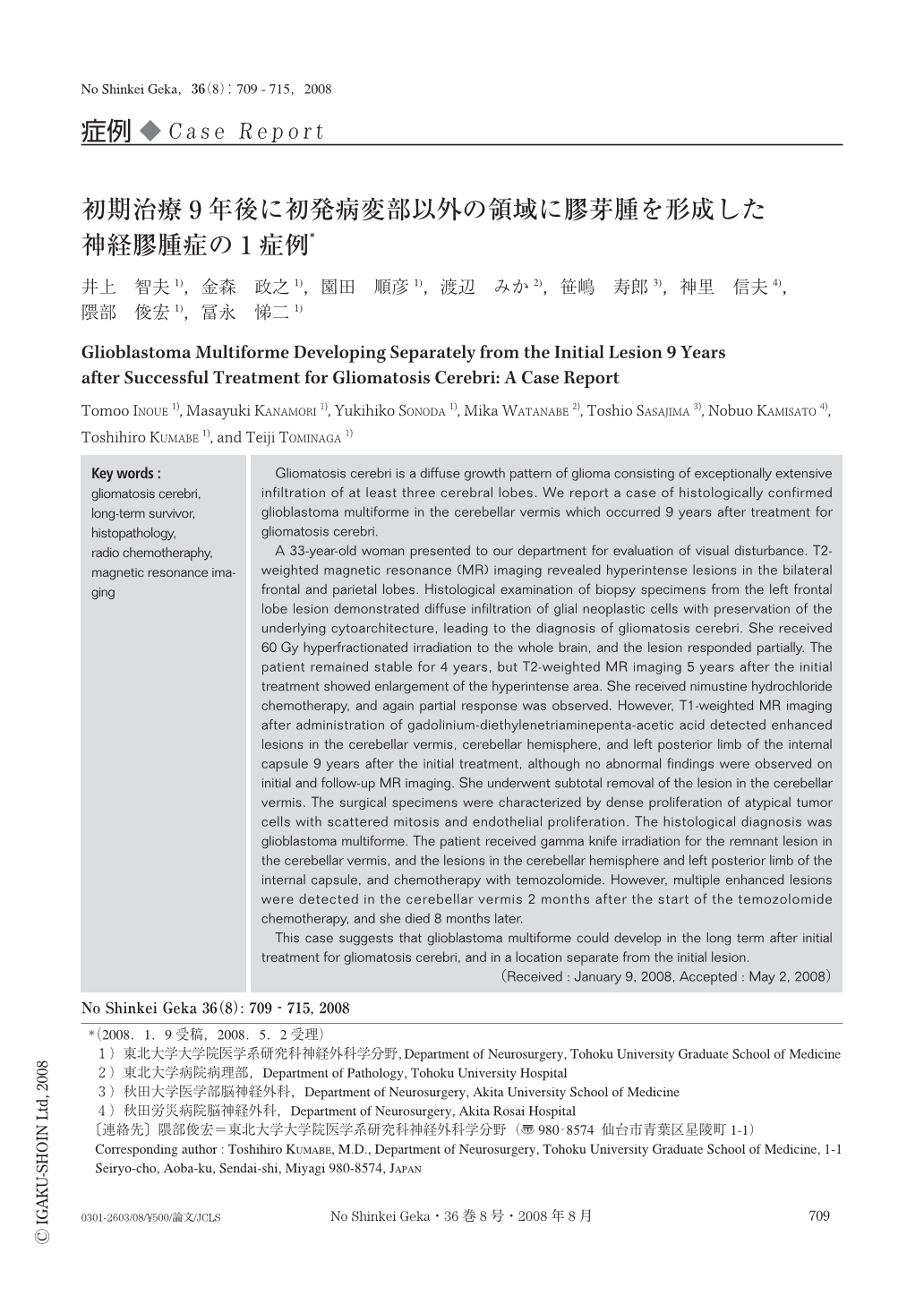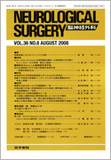Japanese
English
- 有料閲覧
- Abstract 文献概要
- 1ページ目 Look Inside
- 参考文献 Reference
Ⅰ.はじめに
神経膠腫症はグリア系異型細胞が3葉以上の脳葉にびまん性に浸潤,増殖する神経上皮腫瘍と定義されているものの,その病態,自然史については統一された見解が得られていない6).また治療方法として放射線療法や化学療法が施行されるが,1年生存率は50%程度と極めて予後不良な疾患と考えられる1,6,10,12).本報告では,神経膠腫症の診断確定後,放射線化学療法を施行し,長期生存を得たものの,9年後に初期治療時には病変の存在しなかった小脳虫部に膠芽腫を形成した症例を呈示し,文献的考察を加える.
Gliomatosis cerebri is a diffuse growth pattern of glioma consisting of exceptionally extensive infiltration of at least three cerebral lobes. We report a case of histologically confirmed glioblastoma multiforme in the cerebellar vermis which occurred 9 years after treatment for gliomatosis cerebri.
A 33-year-old woman presented to our department for evaluation of visual disturbance. T2-weighted magnetic resonance (MR) imaging revealed hyperintense lesions in the bilateral frontal and parietal lobes. Histological examination of biopsy specimens from the left frontal lobe lesion demonstrated diffuse infiltration of glial neoplastic cells with preservation of the underlying cytoarchitecture, leading to the diagnosis of gliomatosis cerebri. She received 60Gy hyperfractionated irradiation to the whole brain, and the lesion responded partially. The patient remained stable for 4 years, but T2-weighted MR imaging 5 years after the initial treatment showed enlargement of the hyperintense area. She received nimustine hydrochloride chemotherapy, and again partial response was observed. However, T1-weighted MR imaging after administration of gadolinium-diethylenetriaminepenta-acetic acid detected enhanced lesions in the cerebellar vermis, cerebellar hemisphere, and left posterior limb of the internal capsule 9 years after the initial treatment, although no abnormal findings were observed on initial and follow-up MR imaging. She underwent subtotal removal of the lesion in the cerebellar vermis. The surgical specimens were characterized by dense proliferation of atypical tumor cells with scattered mitosis and endothelial proliferation. The histological diagnosis was glioblastoma multiforme. The patient received gamma knife irradiation for the remnant lesion in the cerebellar vermis, and the lesions in the cerebellar hemisphere and left posterior limb of the internal capsule, and chemotherapy with temozolomide. However, multiple enhanced lesions were detected in the cerebellar vermis 2 months after the start of the temozolomide chemotherapy, and she died 8 months later.
This case suggests that glioblastoma multiforme could develop in the long term after initial treatment for gliomatosis cerebri, and in a location separate from the initial lesion.

Copyright © 2008, Igaku-Shoin Ltd. All rights reserved.


